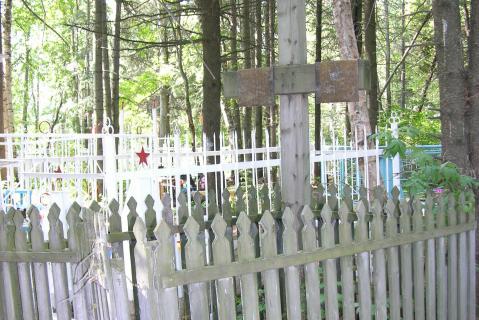In the 1940s-1950s Alexandrovskoe village served as a special settlement for deported Estonians, Latvians and Lithuanians, and also for Soviet Germans. The men, women and children who died were buried in a separate part of the village graveyard, usually in individual graves. Lists of the deceased have not been compiled. The grave markers are not well preserved: the crosses are not straight and the names on the headboards cannot be read.
In 1991 the remains of certain Estonians buried there were exhumed by their relatives and taken home. Where their graves were now stands a commemorative cross with two plaques in Estonian and Russian:
“Memento Mori genotsiidi aastaid! Hoidku jumal taevast ja maad kordumaks. Surmakella häält! See on ka sinu kohus, mööduja! IX-1991.a. Tartu. Memento / Remember their deaths in the years of genocide. God forbid that this ever happen again. To preserve life on earth is the duty and honour of each one of us. September 1991. Tartu. The Memento Association”
The Memorial online database (2025) includes 217,732 (BR 20,603) victims in the Tomsk Region. See Mount Kashtak.
А vast number (197,129) are from the Region’s police records: 124,352 were arrested in the early 1930s (most accused of being “kulaks”) and sent to the Region. More than 20,000 were later deported there as Germans, over half in 1941.
Police record the deaths of 18,464 deportees, over 12,000 of whom had been sent to the Tomsk Region as “dekulakised peasants” in the early 1930s. 763 were Germans.
| Date | Nature of ceremonies | Organiser or responsible person | Participants | Frequency |
|---|---|---|---|---|
|
nk
|
Commemorative Services
|
nk
|
nk
|
From time to time
|
| State of burials | Area | Boundaries |
|---|---|---|
|
grave-markers poorly preserved, crosses leaning over, headboards illegible
|
not determined
|
not delineated
|
[ Original texts & hyperlinks ]
Materials of the 2005 expedition, RIC Memorial (St Petersburg)
Reply № 17-293 of 13 May 2014 from Tomsk Region department for information & public relations to a formal enquiry by RIC Memorial (St Petersburg)


